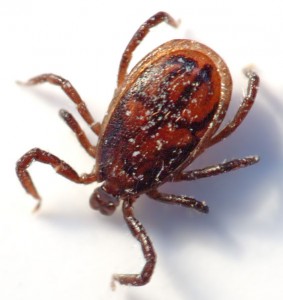Aug 14, 2013 | Uncategorized
It’s important to protect yourself and your pets from ticks this season! Keep reading for more information on the little suckers!

BRIEF DESCRIPTION
- Size varies depending on the species and type.
- More closely related to spiders than insects.
- Can have either a soft or a hard body.
- Usually brought into homes by animals.
- Feed on animals and humans for their blood meal.
HABITS
- Live in low lying areas such as grass, shrubs, and bushes while waiting for a passing host to attach themselves on to.
- Female ticks have about 3,000 eggs in the spring time.
- Ticks feed on humans, mice, squirrels, raccoons, skunks, dogs, and birds.
SPECIES
- American dog tick
- Blacklegged/deer/bear tick
- Brown dog tick
- Lone Star Tick
- Rocky Mountain Wood Tick
THREATS
- Ticks attach themselves to animals or humans to obtain their blood meal by biting the victim.
- Can cause irritation around the site of the bite, allergic reaction, or cause the mouth parts to get stuck in the skin when the tick is removed.
- Known to transfer Lyme disease, anaplasmosis, and babesiosis.
PREVENTION
- When in wooded areas or tall grass, wear long pants, long sleeves, and closed toed shoes.
- Use a bug repellant that contains DEET.
- Keep grass and other vegetation on your property properly cut and maintained.
- Inspect yourself for ticks after being outdoors.
- Inspect your pets for ticks after being outdoors.
- If you find a tick, use tweezers to remove the tick with a slow, gentle, upward pressure.
OTHER PESTS TO LOOK OUT FOR
Call Northwest Exterminating for information on how to protect your home and loved ones from ticks.